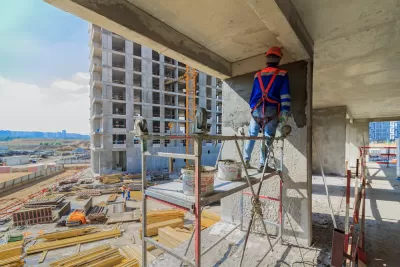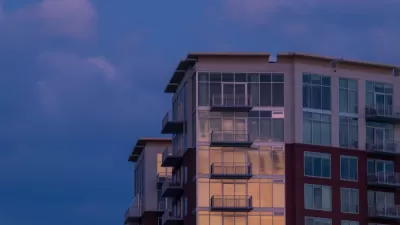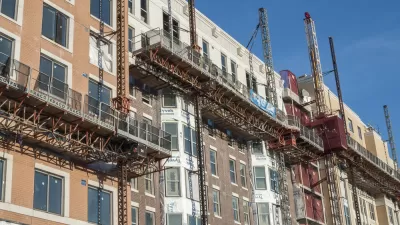A study published by a German researcher adds ammunition to the cause of improving housing affordability by legalizing and building new supply.

Joe Cortright shares news of new research that ties the amount of new rental housing to the cost of rent—the "tortured" supply and demand debate that defines housing policy in expensive areas of the United States.
"In our view, its [sic] been a growing demand for cities and urban living, running headlong into a relatively fixed, or at best slowly growing supply of urban housing that’s been the principle reason for affordability problems in many cities," writes Cortright. "But many housing advocates refuse to believe that increasing housing supply will have any beneficial effect on rents."
Andreas Mense, an economist at the University of Erlangen-Nuremberg, recently published a paper that agrees with Cortright's opinion on the matter. The paper finds that new supply has an effect throughout the market—not just at the top. According to Cortright, the findings of this paper add to a growing body of research showing that "new market rate construction triggers a chain-reaction of moves and price adjustments that rapidly propagate through an entire housing market and ultimately benefit low income households."
Notably, the paper also gives quantitative estimates of how much additional housing a city might need to build to stave off rent increases. In Munich, that number is a 20 percent increase over development totals from the last seven years, but the article cites a graph that charts the supply needed in a large number of German cities as well.
FULL STORY: Building more housing lowers rents for everyone

Study: Maui’s Plan to Convert Vacation Rentals to Long-Term Housing Could Cause Nearly $1 Billion Economic Loss
The plan would reduce visitor accommodation by 25,% resulting in 1,900 jobs lost.

North Texas Transit Leaders Tout Benefits of TOD for Growing Region
At a summit focused on transit-oriented development, policymakers discussed how North Texas’ expanded light rail system can serve as a tool for economic growth.

Using Old Oil and Gas Wells for Green Energy Storage
Penn State researchers have found that repurposing abandoned oil and gas wells for geothermal-assisted compressed-air energy storage can boost efficiency, reduce environmental risks, and support clean energy and job transitions.

Private Donations Propel Early Restoration of Palisades Playground
Los Angeles has secured over $1.3 million in private funding to restore the Pacific Palisades playground months ahead of schedule, creating a modern, accessible space that supports community healing after recent wildfires.

From Blight to Benefit: Early Results From California’s Equitable Cleanup Program
The Equitable Community Revitalization Grant (ECRG) program is reshaping brownfield redevelopment by prioritizing projects in low-income and environmental justice communities, emphasizing equity, transparency, and community benefits.

Planting Relief: Tackling Las Vegas Heat One Tree at a Time
Nevada Plants, a Las Vegas-based nonprofit, is combating the city’s extreme urban heat by giving away trees to residents in underserved neighborhoods, promoting shade, sustainability, and community health.
Urban Design for Planners 1: Software Tools
This six-course series explores essential urban design concepts using open source software and equips planners with the tools they need to participate fully in the urban design process.
Planning for Universal Design
Learn the tools for implementing Universal Design in planning regulations.
Ascent Environmental
Borough of Carlisle
Institute for Housing and Urban Development Studies (IHS)
City of Grandview
Harvard GSD Executive Education
Toledo-Lucas County Plan Commissions
Salt Lake City
NYU Wagner Graduate School of Public Service





























